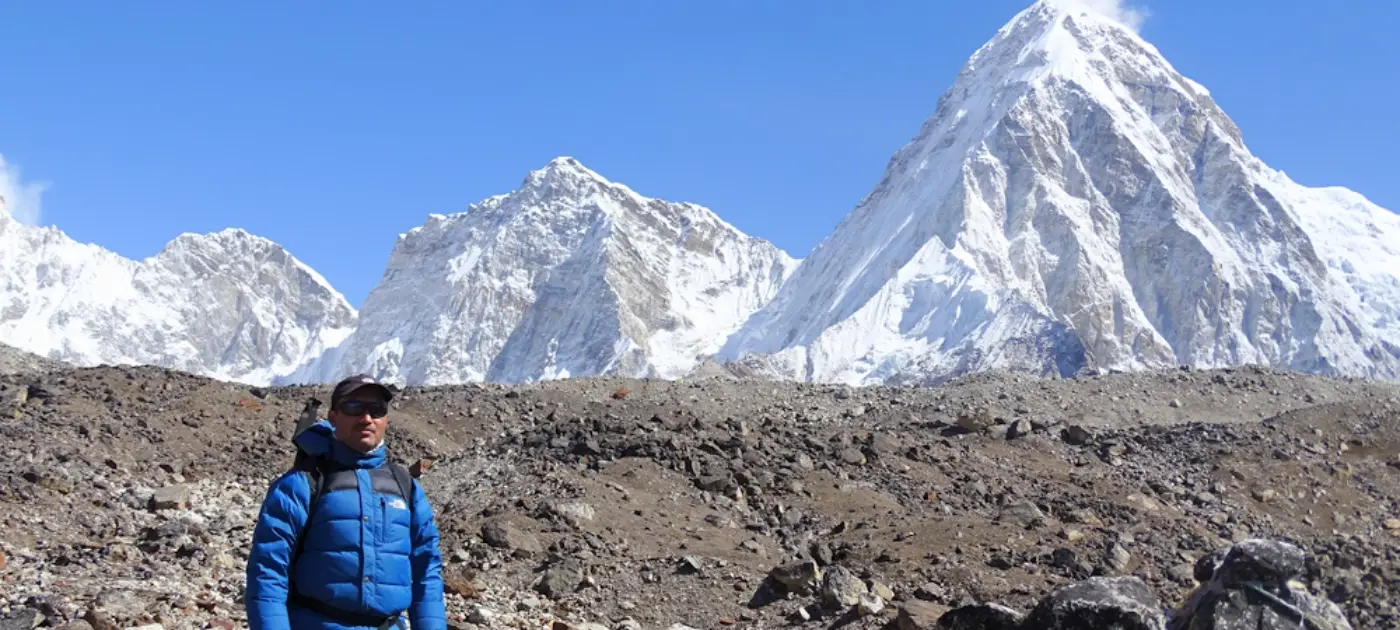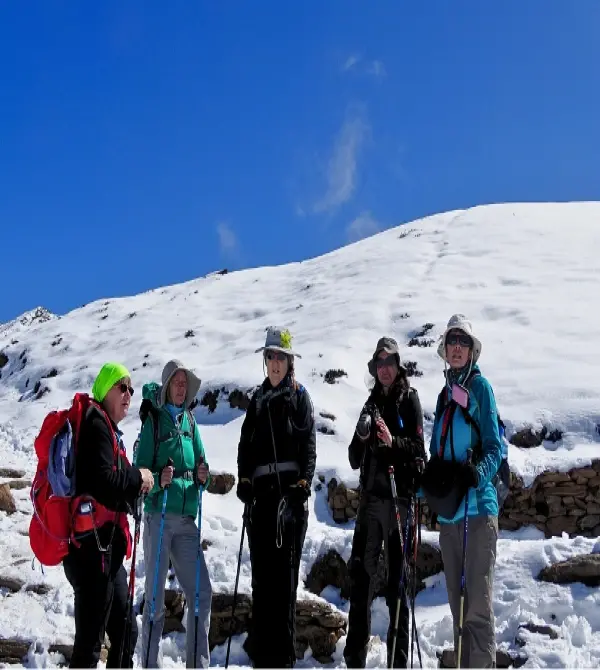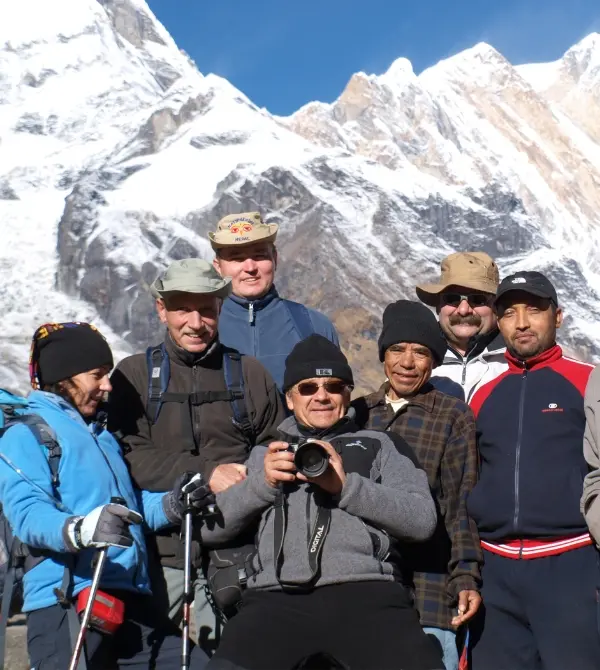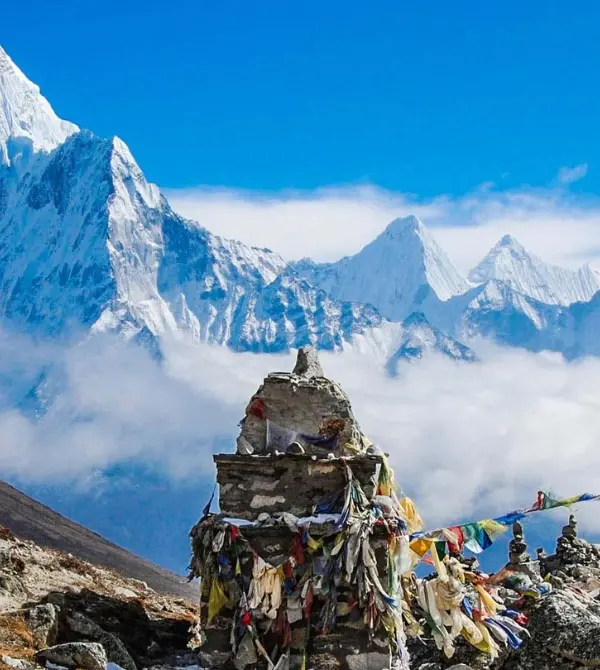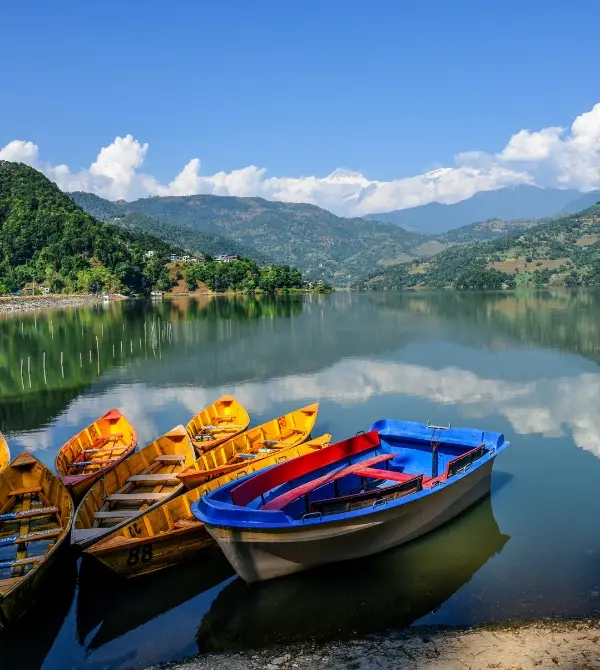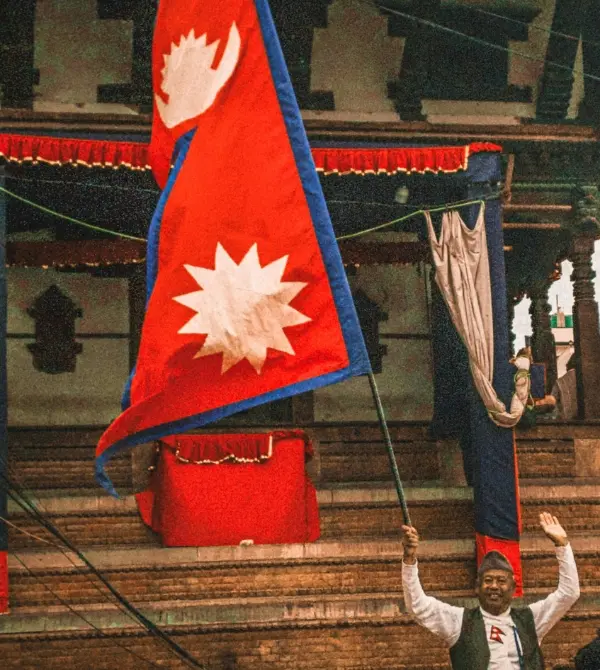Located north of the capital, the renowned trekking route Langtang sees fewer tourists. Turning a journey here into more of an expedition. Here the lofty alpine landscape, with mountains observable from their base to their summits. A hike to the Langtang Valley must be among the most fulfilling short treks that can be found in Nepal. Langtang Trek begins with a day-long bus ride to Syabrubeshi and goes along the Langtang Khola. The trail first goes through farmlands and grassy hills, as well as forests of bamboo, oak, and rhododendron leading to Langtang village. Regrettably, this Langtang was also severely affected by the 2015 earthquake; the whole village was obliterated by landslides in the Langtang valley. Yet the path remains quite pleasant and engaging. The day hike from Kyangin Gompa to Tsergo Ri offers magnificent views of the Langtang, Jugal Himal, Langtang Lirung, and Dorje Lakpa peaks. This might also be referred to as the Langtang Panorama View Trek.
.jpg)
Following the Langtang Valley Trek, the path leads to Gosainkunda, which boasts numerous holy lakes and is a well-known pilgrimage site for Hindu followers. Gosainkunda is indeed the largest of the three primary lakes, with the other two being Saraswatikund and Bhairabkunda, among others. According to Hindu legend, the lake was created when the deity Shiva drove his trident (Trisul) into the earth to acquire water. This section of the trail offers stunning vistas of the mountains, featuring the Manaslu, Ganesh, and Langtang Himal ranges. Include glacial lakes, rhododendron woods, indigenous plants and wildlife, stunning peaks, forests, animals, birds, and monasteries, all contributing to this area's status as an ideal destination
8 Days Langtang Valley Trek | Cost and Itinerary Itinerary
Day 01:Kathmandu – Syabru Besi (1,440m /4,750ft) 9-10 hrs drive
The journey from Kathmandu to Syabrubesi (1,440m / 4,750ft) takes about 9–10 hours by drive. It’s a scenic but long ride through winding mountain roads, passing terraced fields, rivers, and traditional villages. The route offers stunning views of hills and distant peaks before descending to Syabrubesi, the gateway to the Langtang Valley trek.
- Max Altitude:1440m
- Accommodation:Lodge/Tea Houses
- Duration:10 hrs
- Mode of transportation:Bus/Jeep
Day 02:Syabru Besi – Lama Hotel (2,470m /8,104ft), 5-6 hrs
The trek from Syabrubesi to Lama Hotel (2,470m / 8,104ft) takes about 5–6 hours. The trail follows the Langtang Khola River, crossing several suspension bridges and passing through dense forests of oak, rhododendron, and bamboo. Along the way, trekkers may spot monkeys and birds while enjoying a gradual but steady ascent through small settlements like Bamboo and Rimche, before reaching the quiet village of Lama Hotel.
- Max Altitude:2470m
- Accommodation:Tea Houses
Day 03:Lama Hotel- Langtang (3,430m /11,253ft), 5- 6 hrs
The trek from Lama Hotel to Langtang Village (3,430m / 11,253ft) takes about 5–6 hours. The trail climbs steadily through dense forests and along the Langtang Khola, offering occasional glimpses of snow-capped peaks. As you ascend, the vegetation thins and the valley opens up, revealing stunning views of Langtang Lirung (7,227m). Passing through Ghora Tabela, the route continues through yak pastures and traditional Tamang villages before reaching the picturesque Langtang Village.
Day 04:Langtang - Kyanjin Gompa: (3,870m /12,697ft), 3-4 hrs.
The trek from Langtang Village to Kyanjin Gompa (3,870m / 12,697ft) takes about 3–4 hours. The trail ascends gradually through beautiful alpine meadows, passing small mani walls, chortens, and prayer flags. As you approach Kyanjin, the landscape opens up to panoramic views of Langtang Lirung, Dorje Lakpa, and surrounding snow peaks. Kyanjin Gompa is a serene mountain village known for its ancient monastery and the famous Yak Cheese Factory, making it an ideal place to rest and explore.
Day 05:Kyanjin Gompa – Tserko Ri explore (5033m) -Langtang (3,430m /11,253ft), 7-8 hrs
The hike from Kyanjin Gompa to Tserko Ri (5,033m) and back to Langtang Village (3,430m / 11,253ft) takes about 7–8 hours. The trail to Tserko Ri is steep and challenging, but the effort is rewarded with breathtaking 360° panoramic views of the Langtang Himal range, including Langtang Lirung, Yala Peak, Dorje Lakpa, and Shishapangma. After enjoying the sunrise or scenic summit views, you descend back to Kyanjin Gompa and continue downhill to Langtang Village, retracing your path through meadows and yak pastures.
Day 06:Lantang - Lama Hotel: (2,470m /8,150ft), 7-8 hrs.
The trek from Langtang Village to Lama Hotel (2,470m / 8,150ft) takes about 7–8 hours. The route follows a steady descent through forests and along the Langtang Khola, passing villages like Ghora Tabela and Rimche. Though mostly downhill, the trail includes a few short ascents. Trekkers can enjoy the changing scenery—from alpine meadows back into lush forests filled with birds and wildlife—before arriving at the peaceful Lama Hotel.
Day 07:Lama Hotel - Syabru Besi (1,440m /4,750ft), 5-6 hrs
The trek from Lama Hotel to Syabrubesi (1,440m / 4,750ft) takes about 5–6 hours. The trail descends steadily through dense forests of bamboo and rhododendron, following the Langtang Khola. Along the way, you’ll pass small settlements and suspension bridges, with occasional views of terraced fields and distant hills. The journey ends at Syabrubesi, marking the completion of the Langtang Valley trek.
Day 08:Syafroo Behsi – Kathmandu (1,300m /4,264ft) 8/10 hrs. drive, 132 KM
The drive from Syabrubesi to Kathmandu (1,300m / 4,264ft) covers about 132 km and takes approximately 8–10 hours. The journey follows a winding mountain road through scenic landscapes, terraced fields, and traditional villages. As you descend from the hills, you’ll pass through towns like Trishuli and Dhunche, eventually reaching the bustling city of Kathmandu, where the trek concludes.
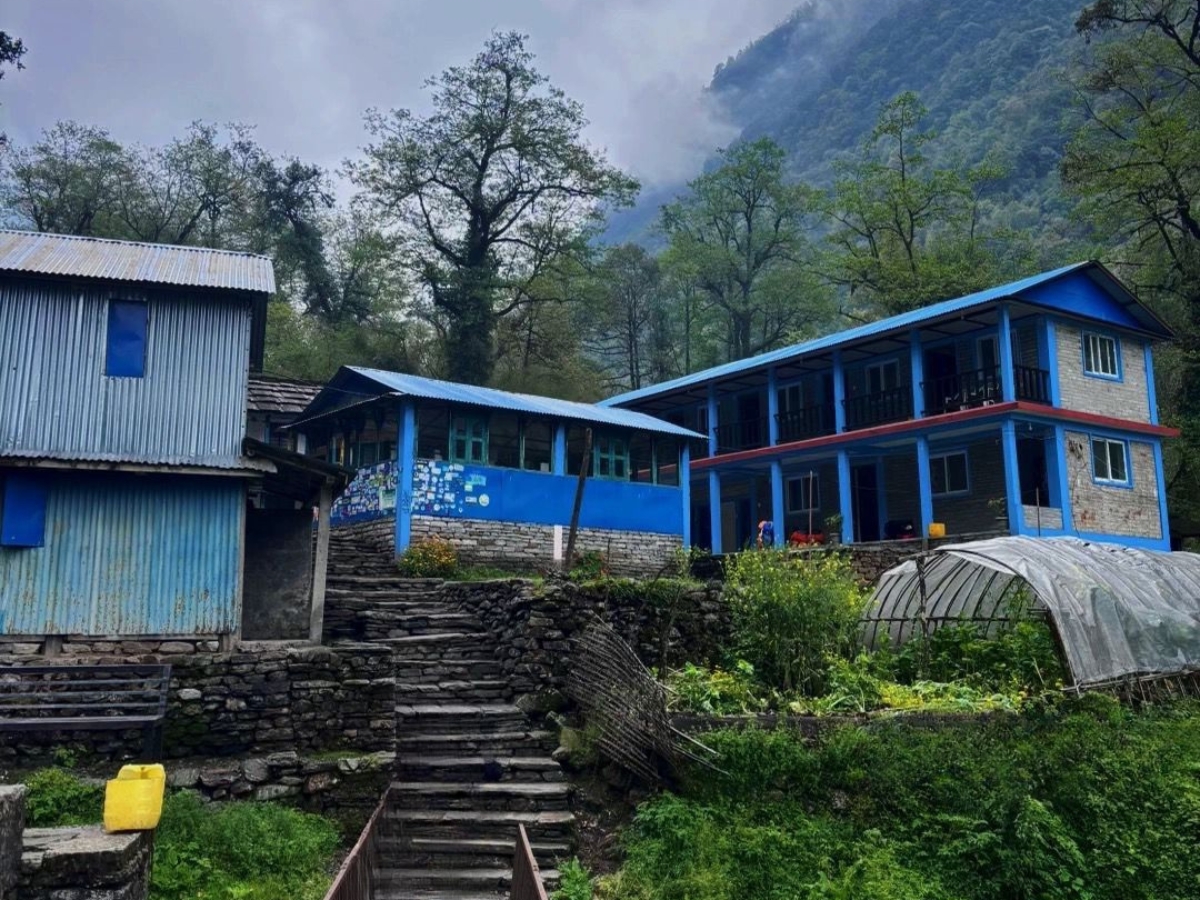
Cost Details
Includes
- Bus tickets ( KTM-SYFROO-KTM)
- Hotel accommodations in Kathmandu
- City tour by private transport
- Transportation City –airport-city
- Langtang National Park permit
- TIMS Permits
- Trekking equipment such as down filled sleeping bag and duffel bag.
- An English-speaking Govt. registered trekking guide
- Local porters to carry luggage (2 trekkers : 1 porter)
- Guide and porter salaries, insurance, equipment, transport, food and lodging
- 3 Meals (Breakfast, Lunch and Dinner) along the way to trek
- Hot drinks (Tea and Coffee) during the meal time.
- Purified/Iodine Drinking water
- All lodge accommodations on twin sharing basis ( private room share toilet)
- A comprehensive first aid medical kit
Excludes
- City entrance fees in Kathmandu city
- Tour guide
- Food in Kathmandu
- Boiled / bottled water
- Hot shower
- Net / Wi-Fi charges
- Electronic device recharge
- Drinks
- Personal expenses
- Travel insurance and evacuation charges
- Heli transport or other private transport
- Tips
Dates and Availability
- Our Langtang Trek is flexible. You can customize it as per your interests and budget.
- 100% fixed departure unless unseen events like natural disasters, bad weather, or political issues disrupt the trip.
- Private trek service available.
- All ages of travelers can do the Langtang Trek with us.
- By booking the Langtang Trek with us, you are agreeing to be bound by our Terms & Conditions.
Equipments
Follow the below packing list to pack:
- Trekking gear
- Duffel bag
- Daypack
- Sleeping bag with liner
- Trekking poles
- Water bladder
- Map
Clothes:
- Breathable undergarments
- Trekking t-shirt and pants
- Thermal layers
- Down jacket
- Fleece
- Windproof/waterproof jacket and pant
Accessories:
- Trekking boots
- Liner socks
- Fuzzy socks
- Gloves (touch screen compatible)
- Scarves
- Beanie
- A casual pair of shoes to wear in lodges
Toiletries:
- SPF
- Wet tissues
- Lip balm
- Moisturizer
- Deodorant
- Handwash
- Shampoo
- Small mirror
- Comb
- Toothpaste and toothbrush
- Toilet paper
Miscellaneous:
- Reusable water bottle
- Water purification tablets
- UV sunglasses
- Camera
- Mobile
- Power bank
- Spare batteries
- Universal charger
- Snacks
- Book
- Journal and pen
- Travelers game for time pass
- Essential Information
Overview of the Langtang Trek
The Langtang journey is one of Nepal’s most accessible Himalayan journeys, located just north of Kathmandu. Known as the “ Valley of Glaciers, ” it offers a rich blend of natural beauty and artistic heritage. The trail follows the Langtang River through timbers, fascinating Tamang townlets, and alpine meadows, ultimately leading to Kyanjin Gompa( 3,870 m) — the journey’s highlight. From then, pedestrians enjoy panoramic views of Langtang Lirung( 7,227 m), Dorje Lakpa, and Shishapangma( Tibet). Unlike further marketable journeys, Langtang remains fairly peaceful and pressed.
The best seasons for the Langtang Valley Trek are:
- Spring( March – May) Mild temperatures, blooming rhododendrons, and clear skies.
- Afterlife( September – November) Crisp rainfall and excellent mountain visibility.
- Winter( December – February) Possible, but colder conditions and occasional snow above 3,000 m.
- Monsoon( June – August) Trails are wet and bloodsucker-prone, though lush and green with smaller crowds.
- Spring and afterlife are the most popular and dependable seasons.
Cultural and Scenic Highlights
The Langtang Valley is home to the Tamang and Sherpa communities with strong Tibetan Buddhist influences. You’ll pass by traditional gravestone houses, prayer bus, cloisters, and various prayer flags. At Kyanjin Gompa, pedestrians can visit the original rubbish plant and hike up to Tserko Ri( 4,984 m) or Kyanjin Ri( 4,350 m) for stirring daylight views over the snow- limited Himalayas. The region also offers a chance to spot wildlife similar as red pandas and Himalayan monals( Nepal’s public raspberry).
Accommodation and Food
The route is well- developed with teahouses and lodges. Apartments are introductory, generally binary- sharing with participated bathrooms. utmost lodges give refections like dal bhat, polls, momo( dumplings), mists, and flapjacks. Advanced up, food becomes more precious due to transport difficulties. Hot showers and Wi- Fi are available at some lodges for an fresh figure. Carrying applicable water bottles and sanctification tablets is advised.
Permits and Access
- Langtang National Park Entry Permit
- TIMS( Pedestrians’ Information Management System) card
Both can be attained in Kathmandu. The journey starts with a 6 – 7 hour jeep/ machine drive from Kathmandu to Syabrubesi, the gateway to Langtang. utmost pedestrians follow a round- trip route from Syabrubesi to Kyanjin Gompa and back.
Trek Difficulty and Preparation
The Langtang journey is considered moderate. Average diurnal walking is 5 – 7 hours with some steep ascents. The maximum altitude is around 4,984 m( if you hike up Tserko Ri). While the threat of altitude sickness is lower than on Everest or Annapurna high passes, adaptation is still important. Having a reasonable fitness position and some previous trekking experience will make the trip more pleasurable.
Quilting rudiments include sturdy hiking thrills, warm layered apparel, touring poles, gloves, and a good resting bag for colder nights.
